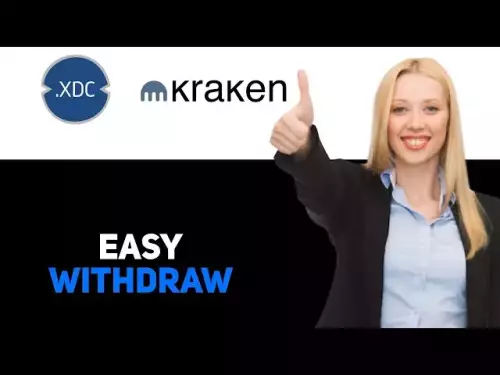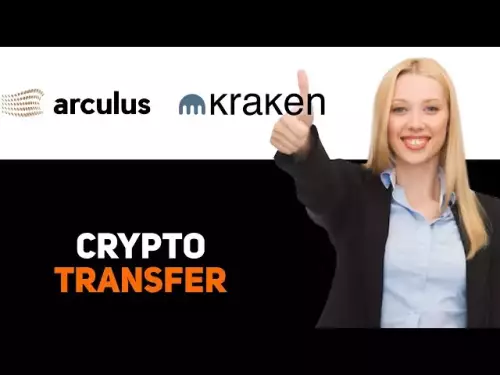-
 bitcoin
bitcoin $114684.631706 USD
-0.87% -
 ethereum
ethereum $4228.677447 USD
1.58% -
 bnb
bnb $1294.880693 USD
-1.16% -
 tether
tether $1.000819 USD
-0.02% -
 xrp
xrp $2.605138 USD
2.79% -
 solana
solana $209.908690 USD
5.89% -
 usd-coin
usd-coin $0.999903 USD
-0.03% -
 dogecoin
dogecoin $0.213423 USD
2.93% -
 tron
tron $0.322721 USD
-0.10% -
 cardano
cardano $0.727247 USD
3.66% -
 hyperliquid
hyperliquid $42.339456 USD
6.05% -
 chainlink
chainlink $19.910811 USD
5.16% -
 ethena-usde
ethena-usde $1.000557 USD
0.00% -
 stellar
stellar $0.349734 USD
2.69% -
 bitcoin-cash
bitcoin-cash $543.848687 USD
-0.21%
Why does the UNI price fluctuate greatly? How to control risks when trading
UNI's price fluctuates due to demand/supply, liquidity, market sentiment, macroeconomics, and tech upgrades; traders can manage risks through diversification, stop-losses, and staying informed.
Apr 30, 2025 at 12:02 am

The price of UNI, the governance token of the Uniswap decentralized exchange, is subject to significant fluctuations due to various factors inherent to the cryptocurrency market. Understanding these factors and learning how to manage risks effectively is crucial for traders looking to navigate the volatile world of crypto trading.
Market Demand and Supply Dynamics
The primary driver of UNI's price fluctuations is the basic economic principle of supply and demand. When there is high demand for UNI, perhaps due to increased interest in decentralized finance (DeFi) platforms like Uniswap, the price tends to rise. Conversely, if the demand decreases or the supply increases, the price may fall. For instance, if a large number of UNI tokens are sold on the market, this can lead to a surplus of supply, causing the price to drop.
Liquidity and Trading Volume
Liquidity and trading volume play a significant role in the price volatility of UNI. High liquidity means there are enough buyers and sellers in the market to facilitate trades without significant price changes. However, if the liquidity is low, even small trades can lead to large price swings. Similarly, a high trading volume can indicate strong interest in UNI, which can drive the price up, while low trading volume might suggest waning interest, potentially leading to a price drop.
Market Sentiment and News
Market sentiment and news can cause rapid and significant price changes for UNI. Positive news, such as new partnerships or upgrades to the Uniswap platform, can boost investor confidence and drive up the price. On the other hand, negative news, such as regulatory crackdowns or security breaches, can lead to panic selling and a sharp decline in price. Social media and news outlets can amplify these effects, as they quickly spread information to a wide audience.
Macroeconomic Factors
Macroeconomic factors also influence the price of UNI. Economic events like inflation rates, interest rate changes, and geopolitical tensions can impact the broader cryptocurrency market, including UNI. For example, if investors perceive cryptocurrencies as a hedge against inflation, they might increase their investments in UNI, pushing the price up. Conversely, if the economy is stable and traditional investments are performing well, interest in cryptocurrencies might wane, leading to a price drop.
Technological Developments and Upgrades
Technological developments and upgrades within the Uniswap platform can significantly affect UNI's price. Improvements in the platform's functionality, such as better user interfaces or more efficient transaction processing, can attract more users and increase the demand for UNI. Conversely, if there are delays or issues with these upgrades, it could lead to a loss of confidence and a subsequent drop in price.
How to Control Risks When Trading UNI
To manage risks effectively when trading UNI, traders should adopt a comprehensive approach that includes several strategies.
Diversification
Diversification is a key strategy for managing risk. Instead of putting all your funds into UNI, consider spreading your investments across different cryptocurrencies and asset classes. This can help mitigate the impact of a significant price drop in UNI on your overall portfolio.
- Choose a variety of cryptocurrencies with different use cases and risk profiles.
- Include some stablecoins to provide stability to your portfolio.
- Consider traditional assets like stocks or bonds to further diversify.
Setting Stop-Loss Orders
Setting stop-loss orders is another effective way to manage risk. A stop-loss order automatically sells your UNI if the price drops to a certain level, helping to limit potential losses.
- Determine your risk tolerance and set a stop-loss level accordingly.
- Monitor the market to adjust your stop-loss orders as needed.
- Use trailing stop-loss orders to lock in profits as the price rises.
Regular Portfolio Rebalancing
Regular portfolio rebalancing helps maintain your desired risk level. As the prices of your assets change, your portfolio's risk profile can shift. Rebalancing involves selling some assets and buying others to return your portfolio to its original allocation.
- Set a schedule for rebalancing, such as monthly or quarterly.
- Review your portfolio to identify any significant deviations from your target allocation.
- Make the necessary adjustments to bring your portfolio back in line.
Staying Informed and Educated
Staying informed and educated about the cryptocurrency market is crucial for managing risk. The more you know about the factors that influence UNI's price, the better equipped you will be to make informed trading decisions.
- Follow reputable news sources to stay up-to-date on market developments.
- Join online communities and forums to learn from other traders' experiences.
- Continuously educate yourself about new trends and technologies in the crypto space.
Using Risk Management Tools
Utilizing risk management tools can provide additional layers of protection. Many trading platforms offer tools designed to help traders manage their risks effectively.
- Use position sizing tools to determine how much capital to allocate to each trade.
- Leverage risk calculators to assess the potential impact of different scenarios on your portfolio.
- Explore options and futures to hedge against potential price drops.
Frequently Asked Questions
Q: How does the governance role of UNI affect its price?A: UNI's role in the governance of the Uniswap platform can influence its price. When token holders participate in governance decisions, it can enhance the platform's development and attract more users, potentially increasing the demand for UNI. Conversely, if governance decisions are perceived as detrimental to the platform's growth, it could lead to a decrease in demand and a subsequent price drop.
Q: Can regulatory changes impact the price of UNI?A: Yes, regulatory changes can significantly impact UNI's price. If regulators impose stricter rules on decentralized exchanges or cryptocurrencies in general, it could lead to a decline in investor confidence and a drop in UNI's price. Conversely, favorable regulatory developments could boost the price by increasing the perceived legitimacy and stability of the platform.
Q: How does the overall performance of the DeFi sector affect UNI's price?A: The performance of the DeFi sector has a direct impact on UNI's price. When the DeFi sector is experiencing growth and attracting more investment, it can lead to increased demand for UNI as more users engage with the Uniswap platform. Conversely, if the DeFi sector faces challenges or declines in popularity, it could negatively affect UNI's price.
Q: What role does speculation play in UNI's price fluctuations?A: Speculation plays a significant role in the price fluctuations of UNI. Traders often buy and sell UNI based on their predictions about future price movements, which can lead to rapid and significant price changes. High levels of speculation can increase volatility, making it crucial for traders to be aware of market sentiment and speculative trends.
Disclaimer:info@kdj.com
The information provided is not trading advice. kdj.com does not assume any responsibility for any investments made based on the information provided in this article. Cryptocurrencies are highly volatile and it is highly recommended that you invest with caution after thorough research!
If you believe that the content used on this website infringes your copyright, please contact us immediately (info@kdj.com) and we will delete it promptly.
- XRP Price Prediction: Weekend Rollercoaster or Rally?
- 2025-10-12 08:45:16
- Bittensor (TAO): Super Bullish Signals Point to Potential 2x Rally
- 2025-10-11 10:25:12
- Silver Price Correction: Navigating the Dip & Identifying Key SEO Keywords
- 2025-10-11 10:25:12
- Decoding Crypto Trends: Bittensor's Bull Run, Cardano's Dip, and LivLive's Presale Buzz in 'Uptober 2025'
- 2025-10-12 08:45:16
- MoonBull: The Crypto Meme Coin Promising 1000x Gains?
- 2025-10-11 10:30:01
- Crypto Payroll Revolution: Stablecoins, Altcoins, and the Future of Salary Payments
- 2025-10-11 10:30:01
Related knowledge

Practical parameter settings for a Bitcoin multi-timeframe moving average system
Sep 18,2025 at 10:54pm
Optimizing Timeframe Combinations for Bitcoin Trading1. Selecting appropriate timeframes is crucial when building a multi-timeframe moving average sys...

How can I filter out false breakouts in Dogecoin high-frequency trading?
Sep 22,2025 at 01:00am
Understanding False Breakouts in Dogecoin Trading1. A false breakout occurs when Dogecoin's price appears to move beyond a defined support or resistan...

Techniques for identifying tops and bottoms in the Bitcoin on-chain NVT model
Sep 20,2025 at 07:54pm
Understanding the NVT Model in Bitcoin Analysis1. The Network Value to Transactions (NVT) ratio is often described as the 'P/E ratio' of the cryptocur...

What does the surge in open interest in Bitcoincoin futures mean?
Sep 20,2025 at 11:18pm
Understanding the Surge in Dogecoin Futures Open Interest1. A surge in open interest within Dogecoin futures indicates a growing number of active cont...

How can I use the Ethereum USDT premium to gauge market sentiment?
Sep 18,2025 at 11:55pm
Understanding the Ethereum USDT Premium1. The Ethereum USDT premium refers to the price difference between USDT (Tether) traded on Ethereum-based plat...

What should I do if Ethereum staking yields decline?
Sep 20,2025 at 06:18am
Understanding the Causes Behind Declining Ethereum Staking Yields1. The Ethereum network transitioned to a proof-of-stake consensus mechanism with the...

Practical parameter settings for a Bitcoin multi-timeframe moving average system
Sep 18,2025 at 10:54pm
Optimizing Timeframe Combinations for Bitcoin Trading1. Selecting appropriate timeframes is crucial when building a multi-timeframe moving average sys...

How can I filter out false breakouts in Dogecoin high-frequency trading?
Sep 22,2025 at 01:00am
Understanding False Breakouts in Dogecoin Trading1. A false breakout occurs when Dogecoin's price appears to move beyond a defined support or resistan...

Techniques for identifying tops and bottoms in the Bitcoin on-chain NVT model
Sep 20,2025 at 07:54pm
Understanding the NVT Model in Bitcoin Analysis1. The Network Value to Transactions (NVT) ratio is often described as the 'P/E ratio' of the cryptocur...

What does the surge in open interest in Bitcoincoin futures mean?
Sep 20,2025 at 11:18pm
Understanding the Surge in Dogecoin Futures Open Interest1. A surge in open interest within Dogecoin futures indicates a growing number of active cont...

How can I use the Ethereum USDT premium to gauge market sentiment?
Sep 18,2025 at 11:55pm
Understanding the Ethereum USDT Premium1. The Ethereum USDT premium refers to the price difference between USDT (Tether) traded on Ethereum-based plat...

What should I do if Ethereum staking yields decline?
Sep 20,2025 at 06:18am
Understanding the Causes Behind Declining Ethereum Staking Yields1. The Ethereum network transitioned to a proof-of-stake consensus mechanism with the...
See all articles

























![[4K 60fps] Prisma by novichokk (1 Coin) [4K 60fps] Prisma by novichokk (1 Coin)](/uploads/2025/10/14/cryptocurrencies-news/videos/k-fps-prisma-novichokk-coin/68ee49804ba00_image_500_375.webp)
















































